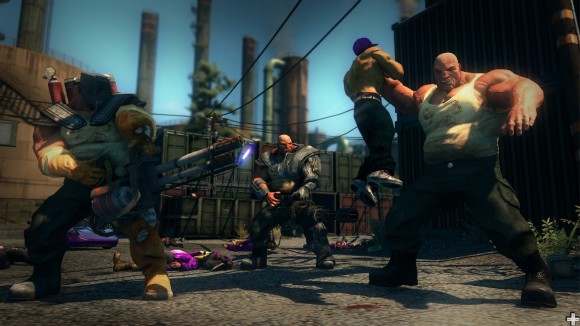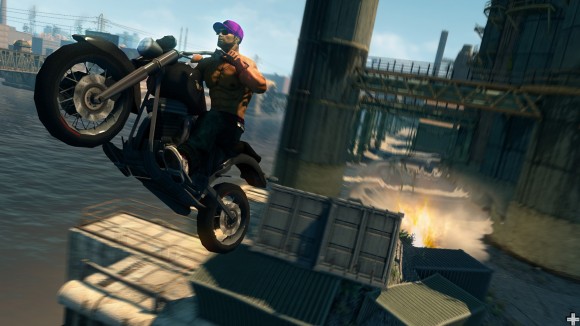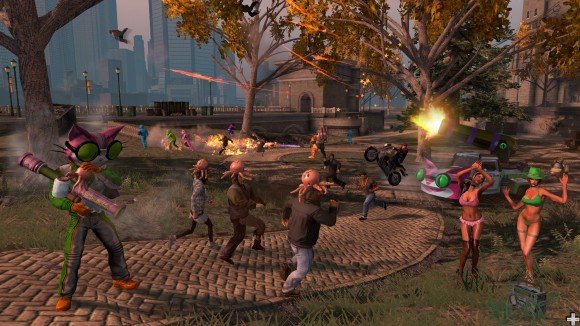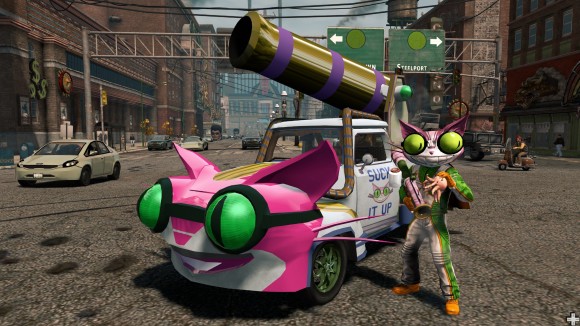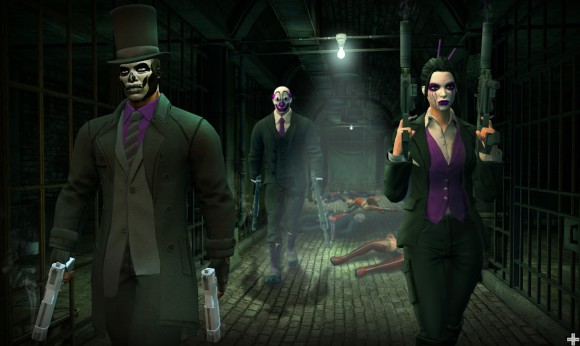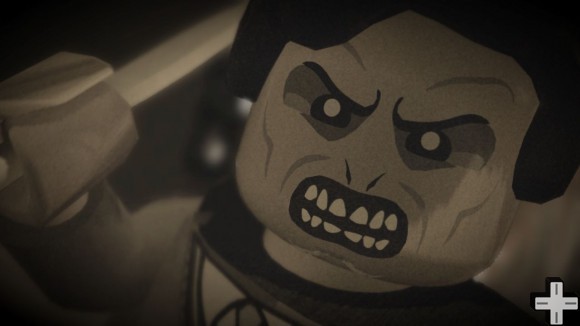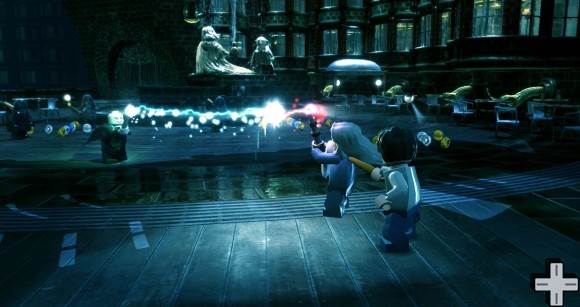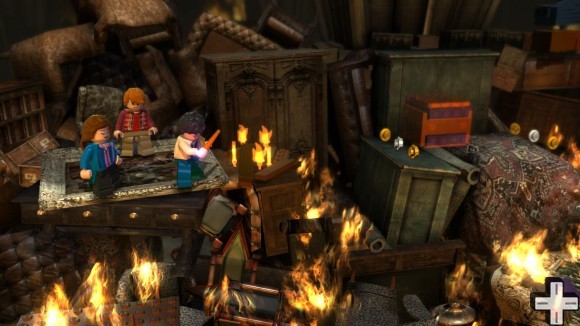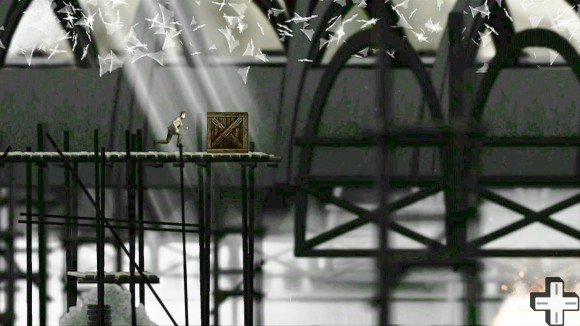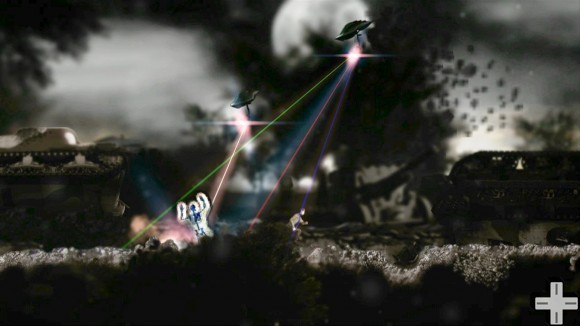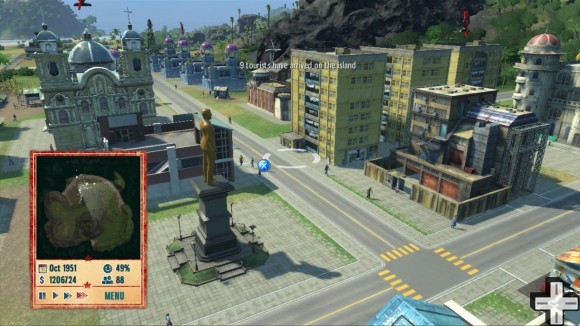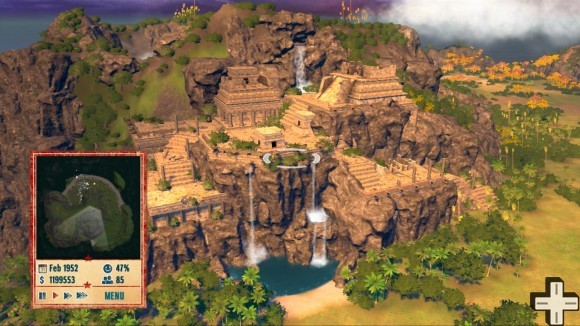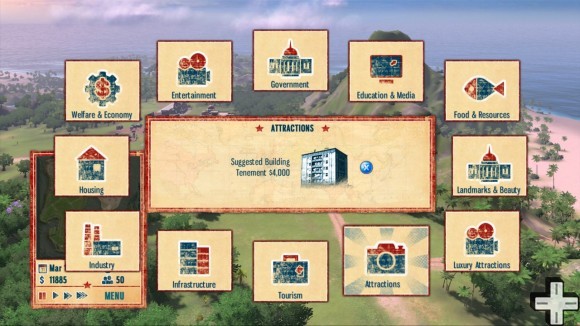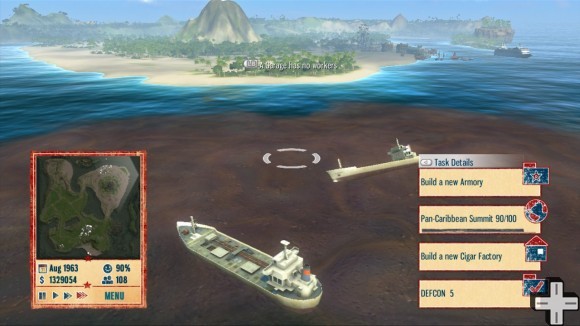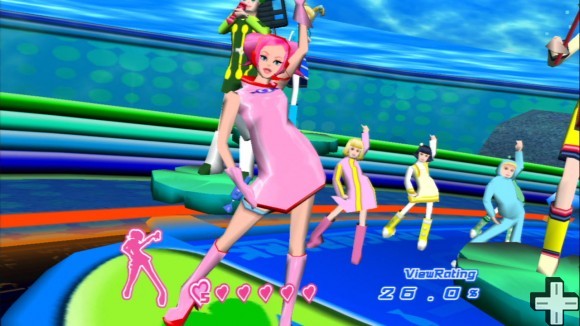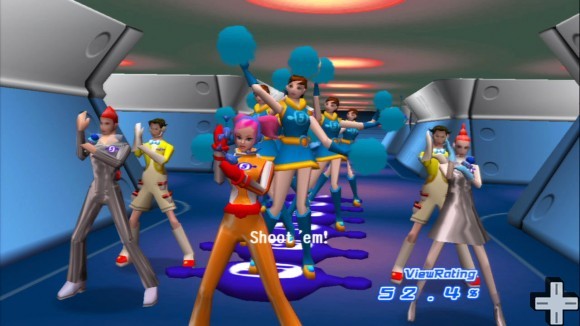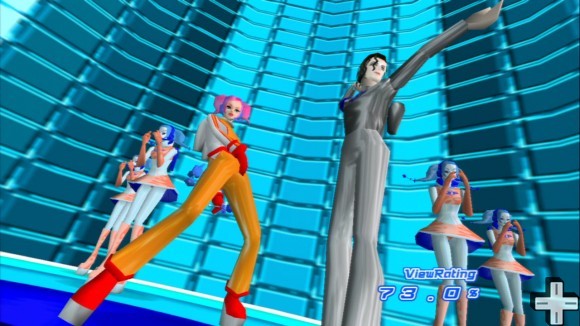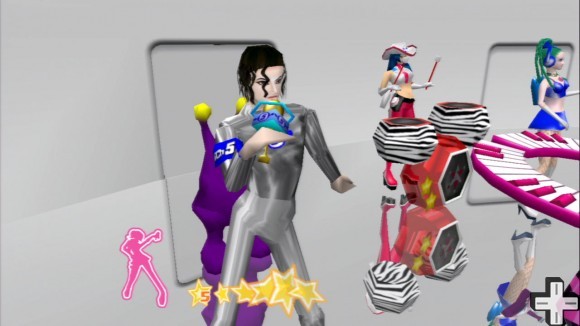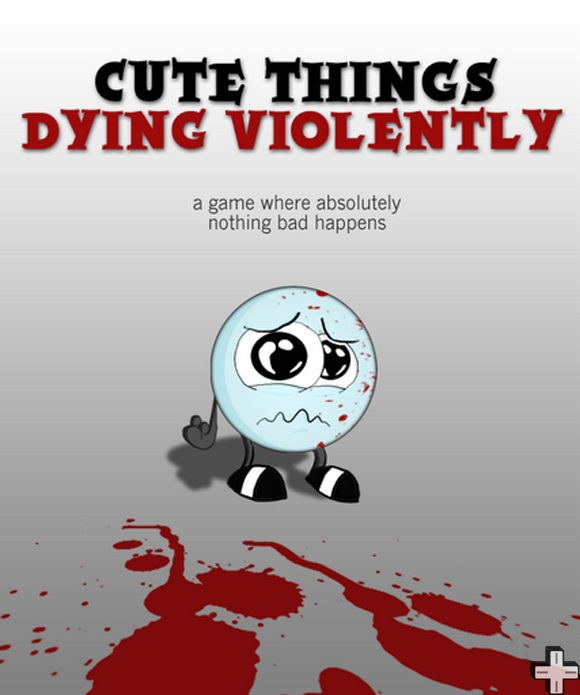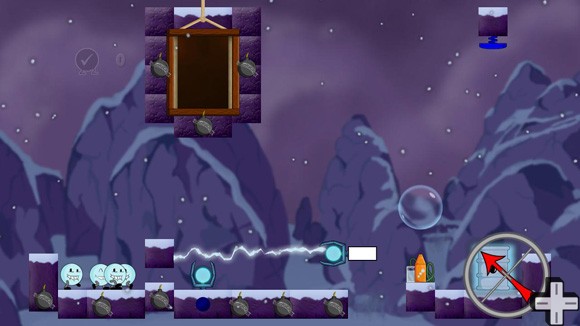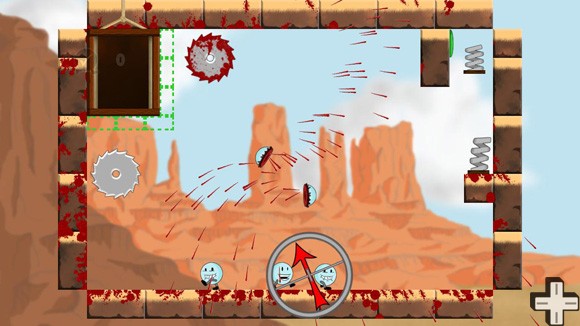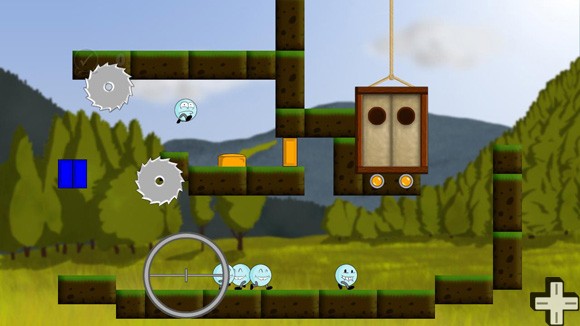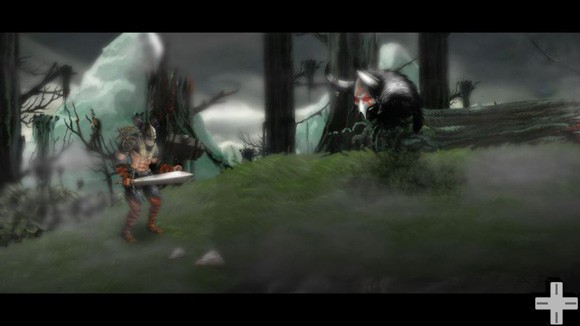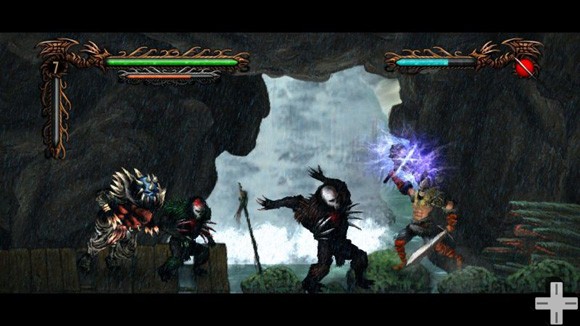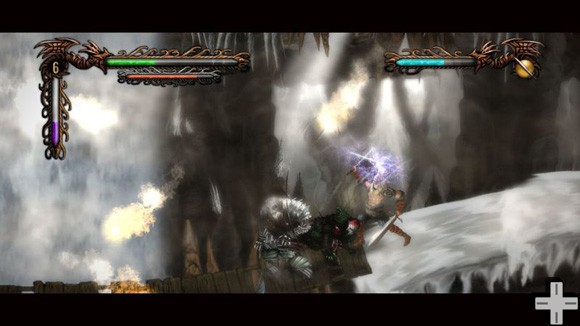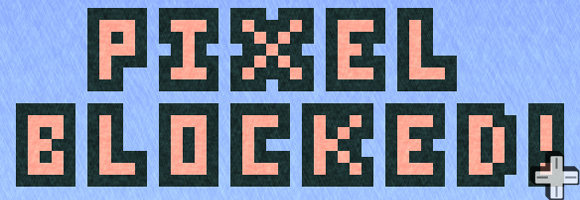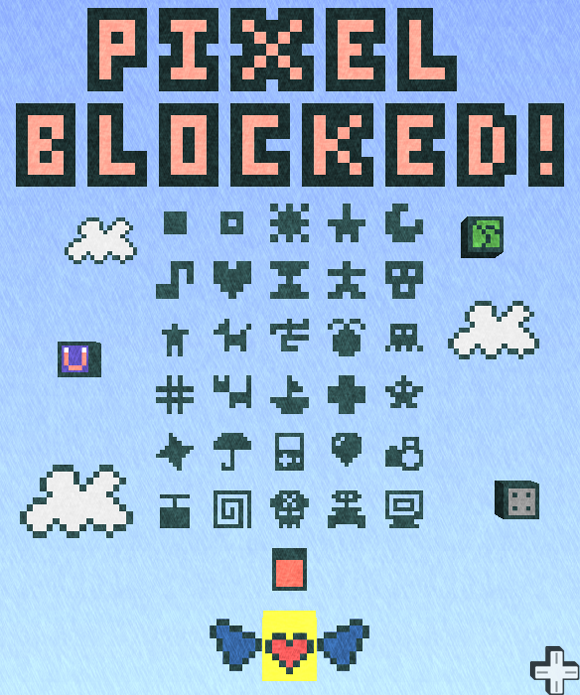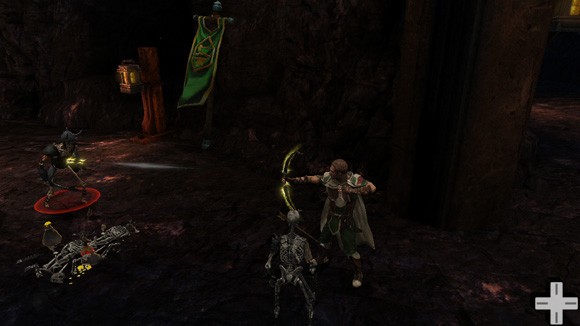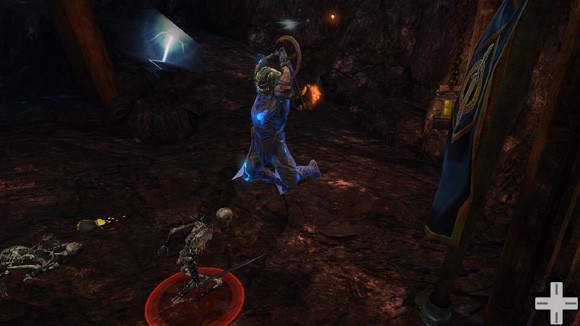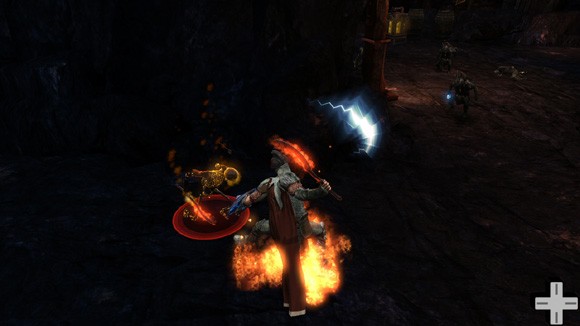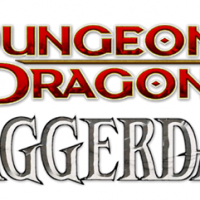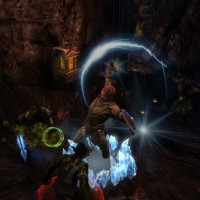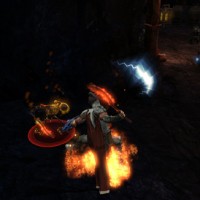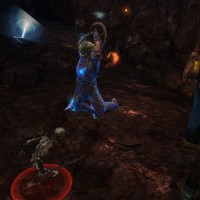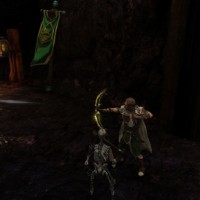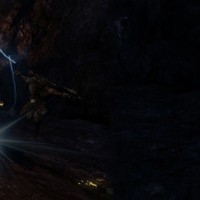Saints Row The Third


Since the series inception in 2006, Saint’s Row has been unfairly dismissed as the underdog of it’s genre; especially compared Grand Theft Auto. Although both remain as open-world action-adventure, Saints Row The Third takes this to a dizzying new level of customisation and expansive activities. Unlike Grand Theft Auto IV, there are no dull ‘realistic’ missions like taking girls for dates and delivering pizzas – you’re more likely to take escort a tiger around Steelport. It is here that we see a definitive break in the connection between the two titles – Saints Row offers the player much more in its hilarious characters and cutting humour. This is perfectly characterised by voice actors bringing them to life.
When the player left Saints Row Two, The Saints were on top, which is only fair considering the amount of hard graft you put in to get there in previous titles. They are the rulers of Stilwater, as the first cut scene shows they have their own brand of energy drink, the aptly named ‘Saints Flow’ along with a status of global celebrities. This is when the player may start noticing the critiques on modern day society, ever so inherent in this game, even the radio stations hint at it. Inevitably when the player starts this game they are on top of the world, nothing can harm them – there is seemingly no hard graft or hustling a fraught civilian for your first weapon. Until you meet the Syndicate.
At which point, you’re dropped into an entirely new city: Steelport, consisting of eight islands, where there is plenty to explore. This sets the scene for the story – unfortunately hinting at the same formula. So, like Hercules, the player is taken from hero to zero. The Syndicate reduce the Saints to nothing. So, naturally the player has to go through the motions of Gang recruitment and bringing the noise to the neighbourhood gangs again – the Deckers, Morningstar, and Luchadores.
Saints Row The Third begins with the mission to escape the Syndicate who have taken the Saints hostage; this is where the fun begins. The player is immediately immersed in the game by robbing a bank with a helicopter and skydiving a la no parachute to the ground where the uphill struggle for respect and money begins. It satisfies the need to introduce characters and game-play instructions for those who haven’t played before but it also displays ambitious action sequence footage, something the Developers have obviously worked on.
Ironically, this is the only thing that lets Saints down. The in-game aesthetics haven’t matured, the cracks haven’t been smoothed over, scenery still becomes snagged and vehicles still seemingly become ghosts around solid objects. Although Saints provides an open-world, it doesn’t produce a living world. The scenery is dark, apart from the neon lighting, and coupled with the jerky movements could almost lead players to believe they are in a zombie apocalypse.
From the start, it is easy to say that the game-play is very similar to Saints One and Two. Veterans to the series will pick up the controls very easily; however, there is still no lock-in firing for seamless combat. You’re going to need skill in this department unless your last name happens to be Bond. That is unless your player happens to have a rocket launcher, perhaps with exploding bullets – just for funsies – this makes enemies easier to wipe out, until the game progresses and its begins to challenge the contender equally; all dependent on the choices players make.
This allows the pace of the game to be stepped up significantly, especially in times of heavy combat with rivals. However, there are tutorials in between the missions introducing the basics, those who’ve played before will soon wish there was an eliminate function. The phone menu also helps both veterans and virgins alike providing a street map to find activities, a place to ring your homies to help out in a brawl with their individual special perks or simply finding stores.
The hard-earned cash that’s been stolen, earned and bled for can be spent in a variety of places across Steelport. Places like Let’s Pretend, the fancy dress shop or Rusty’s Needles, the local tattoo parlour for upgrades, there are upgrades weapons, strongholds and indestructible vehicles. Whilst to start with, these upgrades will make the game a breeze, the difficulty soon jumps up a notch and the Police, gangs and The Saints need to be taken seriously.
Respect is another form of currency in Saints Row The Third. The old respect system has died, alongside the various story progress options, to gain more respect, the activities need to be completed. Respect unlocks new upgrades in different categories, all listed in the phone menu. This ranges from a blow up doll outfit to nitrous for all vehicles to Professor Genki’s Super Ethical Reality Climax.
As soon as you begin, Saints comes into its own through the first character customisation. In Image as Designed, you become the person you’ve always dreamed of being and with remarks you’ve only wished to say in reality. The middle fingers still a casual favourite. Unfortunately, characterisation is still plagued by texture faults, although never fails to produce the sexiest mohawked prostitute or hulking green caped crusader that can be set loose to roam the streets of Steelport.
Creating outlandish characters and keeping them hidden is a thing of the past, with Initiation Station. Friends can create, share and download into game-play each other’s characters. This is only one of the co-op features in Saints. The Saintsbook, found in the phone menu, offers players the chance to drop-in and drop-out of assassination contracts, vehicle thefts and challenges like Vehicle surfing and Cat and Mouse – aerial hunting friends on the ground. This game was perfected for multiplayer and can all be caught on camera too to share online.
The last new feature produced for Saints Row The Third is as crude as you can get – Whored Mode. In a nutshell, you kill whores with a giant purple dildo bat. There are three maps, 30 waves and is all playable in co-op. Never has there been so much ‘throw your head back’ laughing whilst playing a game. You have to question just how society got here.
Never has a game been so over-the-top and presented so much jaw dropping madness as Saints Row The Third. From the off the game doesn’t take itself seriously and this becomes apparent the more time that is spent with the title. Anyone looking for a decent buy containing mindless violence, sexual depravity and juvenile perversion will adore this title.
LEGO Harry Potter Years 5-7


His is a story whom nearly every human on the planet has read and re-read time and time again; the story of The Boy Who Lived. Seven books later and J.K. Rowling had created a magical legend that would define a generation of children’s childhoods. These are immersive stories that capture the heart and unleashed Potter-mania across the world. Magic has always been a key interest for children and adults alike but it is bespectacled Harry Potter and his two companions, Ron Weasley and Hermione Granger that really made a world believe that magic could be possible.
So was the highly successful film series, detailing and bringing to life each of the books in mystical detail. Fans were delighted until it had to eventually end. However, never fear LEGO Harry Potter Years 5-7 is here! For those who were hanging up their robes and boxing away their wands, here is your chance to re-enter the World of Wizarding adored by so many. Years 5-7 is the continuation of LEGO Harry Potter Years 1-4 but don’t be fooled into thinking this is a stale copy. It offers a whole lot more, making this game worth your galleons.
Over the past six years, it is fair to say that the LEGO franchise hasn’t really deviated from the same formulae used in LEGO Star Wars. The games are released after a successful film and follow the plot to a basic level – add adorable Lego aesthetics, a multitude of puzzles and a dash of goofy humour – and you’re there.
The game follows the last three films; The Order of the Phoenix, The Half Blood Prince and The Deathly Hallows. As you’d expect a lot of the material is missing but the main parts are still there in all their brightly-lit brick glory. As Potter fans will know, in the last three films there is a lot of dark material to be covered and it could be argued Lego would have a tough time re-creating this in such a cheerful family-friendly dynamic but it manages the material perfectly by glossing over the darker areas with speechless gags. Harry never gets detention from Umbridge and Sirius’ death is looked over as just a passing concern – they are just minor inconveniences for the brand.
Years 5-7 begins in the first hub, Diagon Alley, albeit not really in the latter films and seemingly out of place, it sets a friendly base for unlocking cheats, new characters, videos and levels. This is swiftly followed by the easily recognisable Hogwarts. Here the game presents us with an irritating overlap from the first game. After having explored Hogwarts fully in the first game, it is tiring to explore it again although new features have been invariably added to keep the faithful gamer amused, such as Parsel-tongue puzzles. The same-old booing from Slytherin pupils never fails to amuse and Nearly Headless Nick’s spoon-feeding guidance can be a blessing in disguise. However, adventure cannot come quick enough through new areas such as Grimmauld Place, creatures such as Thestrals and fun vehicles such as Dragon Boats. Flashbacks and dream sequences are accessible with the help of Professor Snape providing a welcome break from familiar tasks and with de-saturated colours are instantly recognisable.
The action is kept light-hearted and cheerful from the off with mini-puzzles to sustain variety; each character has different tools they can use to unlock hidden areas and challenges, for example, Hermione has Crookshanks to dig up sandpits and Dudley’s strength can be used to open padlocked areas. Years 5–7 obviously picks puzzles over combat as you’d expect – the use of spells and potions are the most prominent. These can be collected as the game continues and are easy to use through the new spell and character menus. Awkward spells such as Levitation from the first game have been dropped creating less frustration and are replaced by Quick-fire Expelliarmus and new spells such as Aguamenti that enables the player to spray water from their wand. This change enables faster and sharper combat which can be fully explored during duelling, especially in the beautiful Room of Requirement. Duelling circles do become over-used though as the game goes on, they seem to appear every few minutes.
Each key character has to be used to achieve the mystical 100% – the basic story-line will only take you as far as 50%. This is why co-op mode is much more entertaining; the drop-in/drop-out system is easily managed and the shifting screen splits when two players are too far apart; this creates disorientating game-play but is ultimately worth it. Years 5-7 was designed for multiplayer. This is not to say that single player is uninviting, the AI is good and never gets in the way enabling the player to explore and repeat areas time and time again with each new character but this can become samey. It is fun playing as the usual suspects like Dumbledore and finding collectibles such as the Hogwarts Crest and Students in Peril although these do take time to find but provide a welcome challenge. The only negative to finding new characters through the game is that you must use the many thousands of studs you’ve collected, by smashing up everything, to buy them – even if they are practically unknown characters. Collectors will inevitably hate these purchases.
The music is reminiscent of the original symphonic scores and accompanies the intricate and spell-binding detail of the Lego Harry Potter scenery. This is especially effective in the Half Blood Prince raid on Gringotts and the climactic Ministry of Magic battle from Order of the Phoenix. Environments such as these have been made in stunning Lego accuracy; all are easily recognisable and instantly charm you into wanting to explore more albeit unco-operative camera angles make exploring a hard task in places; stairs often become mission impossible. Also familiar are the characters, Neville with his buck-tooth grin and Snape with his haughty disdain exemplified by his prominent huffs, even Umbridge is presented as just as evil from the films with her menacing smirks but not as worrying as He Who Must Not Be Named.
LEGO Harry Potter Years 5-7 is arguably one of the best games ever tied to a Warner Bros franchise and should be commended as the best Lego game of the series. For those not in the Potter-know, the levels may be completely baffling but this game was created for the fans – something to help put-off a Potter-free existence. It does this in a reliably entertaining way and is a game that presents so much replayability it questions whether it is possible to put it down.
The War of the Worlds

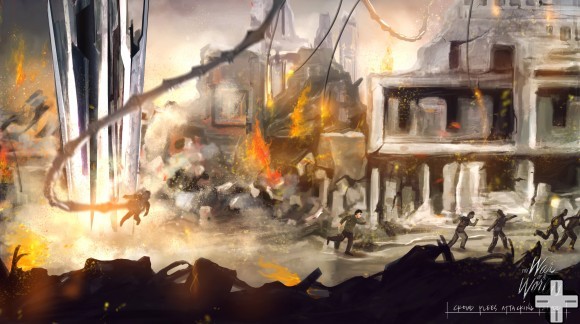
It’s a tale that’s so well written, has an atmosphere that transcends the written word and plunges into the depths of your soul that, when released in the USA, caused mass hysteria. The concept of an alien invasion is nothing new to a 21st Century audience, the fact that aliens can no longer be used as a plot twist in a film as it’s “predictable” goes to show the proliferation of this once interesting genre. Yet, in 1898, when The War of the Worlds was first published, it was not only new and refreshing, but a few years later used a modern medium (the radio) to cause panic amongst the Americans.
Over a hundred years later, it’s been developed into a videogame and whilst the original was able to penetrate the mind and soul with its meaningful prose, this game will touch the soul in an entirely different way. The War of the Worlds starts as any traditional game does, with an opening sequence; however, unlike most games throughout the entire opening sequence, which is narrated by Jean-Luc Picard Patrick Stewart, the gamer has control of the lead character.
Of course, this means that where the player ends up to “start” the game, will depend on where they are when they get hit by that first alien blast. Yet, getting it wrong, well, it has some painful consequences. Unlike many games these days, where if you make a mistake it’s not a problem, you just reload the save file, The War of the Worlds is much harsher. It’s almost like playing a SEGA Mega Drive game again when you start at the beginning of the level after each death, or at one check point, a long time ago in the level. This makes The War of the Worlds far more challenging and therefore a more rewarding experience.
Patrick Stewart lends his considerable talent to the game and narrates the progress and specific points in the game; this expands on the story and gives the gamer reasons for actually trying to complete a level. In addition to this, mini radio broadcasts explain what’s happening in the wider London area and detail the destruction the world is facing. The gravitas of the delivery also lends itself well to the surrounding landscape. The surroundings in level shows a world without power, in chaos, whilst basic, they remain beautiful and in the background landscapes shows a variety of aliens attacking the world and a London on fire.
The lead character isn’t the super hero we’re used to either. He can’t survive a twenty foot fall, he can scarcely cope with a twelve foot fall! He can’t walk through fire, he can’t take laser beams to the chest and be OK and he certainly can’t cope with electric. These very human traits take a while to get used to, and judging speed and distance is something that takes a bit of time to get used too, yet it only adds to the realisation that the character is simply a normal guy trying to survive an alien invasion.
Precision and timing are two words that really could sum up The War of the Worlds in a nice little package. However, these two words don’t always flow to the developers, some of the patterns in the way the electrics move, some of the slightly off attacks of black mist, or in one particular area where you die if you’re even half a second out will cause many people just to switch off. Yet, looking past these few and infrequent flaws the gameplay is actually very enjoyable. Whilst the multiple deaths are frustrating, it makes completing the level even more enjoyable. There are eleven levels to work through and only at certain points will the game save, no voluntary save or load options, with that combined with the amount of times the gamer will die, it feels closer to fifty levels rather than eleven.
The characters responsiveness is also a little off, it’s not just down to the ability to be pixel perfect, but throughout the game the lead character runs in a strange way, jumps in a strange way, rolls in a strange way. When you try and go to make him jump, there’s usually a slight delay as well. This can lead to some very frustrating deaths that really aren’t the players fault, but just bad programming. Yet the majority of the slow down is consistent and can be factored in.
The War of the Worlds is a game from another decade, much akin to the story it’s taken an old idea and made it relevant and enjoyable once again. Whilst the incredibly steep learning curve and brutal treatment of failure will put many gamers off, it will appeal to those who remember playing NES games and saying, why aren’t games hard anymore.
Tropico 4


Fidel Castro, he’s a very misunderstood man. He’s not exactly a Stalin, Chair Mao or Hitler, but he’s certainly no Clinton, Thatcher or Sarkozy either. Yet, this communist revolutionary is clearly has more than just a thought in Tropico 4, where the aim of the game is to govern and develop a small set of islands as a dictator.
It’s not every day that a small Caribbean island goes from being a backwater island where the population is only 50 or so with no electric to becoming a super power. Yet, this is exactly the sort of thing that Presidenté manages to do, on multiple islands in the Tropico region. Playing as Presidenté the ruler of a small set of islands it’s only natural to create an Avatar that represents that sort of presidency that’s about to occur. Of course, the ability to be unique exists and things like personality can range from couch potato to superstar but there’s also a number of characters who are inspired from real life dictators.
Once the style and personality of Presidenté has been created, each of which will impact everything on the island, it’s time to actually understand how to play this PC to Xbox 360 game. Tropico 4 is a simulation cross city building game and there are few cases where a sim game plays better on a console than on a PC. After all, the simulation and RTS genres are designed for and around a mouse and keyboard. Yet, Tropico 4 plays easily on the Xbox 360 with little challenge. Naturally, there are some functionality challenges and it does take a little bit of time to work out the layout of the buttons. By default a map and general status of the country as a whole is displayed on the screen at all times. Yet, when developing an economy it’s important to understand imports, exports, what the general peasantry want, need, and let’s not forget foreign aid. This is all displayed in the Almanac, which is hidden away behind a few taps of the controller; yet, to build a farm, it’s an entirely different place.
To try to solve this challenge, Tropico 4 has an exhaustive four level Tutorial Mode, which teaches the player almost everything they need to know. From how to develop a small island, to dealing with the rebel scum who will organise coup d’état and this is all wisdom handed down to you by your old pal, Generalisimo.
The bulk of the game is made up by the Campaign Mode, which is 21 levels long and whilst it’s learning curve is fairly steep, it’s a very satisfying experience. Text and sporadic voice acting at the start of each campaign detail the main aim of the level. Throughout each island, there are further challenges; which range from getting one million followers on Twitter to ordering an execution of a criminal. Of course, these little extras are a great way of keeping the game fresh, but the main aim is to try and keep your populace from not only revolting and removing you from power but also to ensure that money is being made.
Making money is always the aim of the game, with very few exceptions, being in the black is the only way for an economy to flourish and each island that’s under the Presidenté’s rule will develop in a variety of ways. After all, this is the Caribbean so Tourism is always a big thing, but farms, industry and being a weaponised country can and will make a difference to the prosperity of the islands. However, with each decision comes and consequence and this is keeping the various political factions happy, the Environmentalists aren’t going to be happy with nuclear power; yet, the Nationalists aren’t going to be happy with souring immigration levels. It’s a fine line and whilst being an evil dictator sounds fun, this multi-layered game only goes to show how truly complicated being maniacal can be.
Whilst making money is important, the look and feel of the game is just as vital. Whilst on the PC Tropico 4 looks considerably better, if your setup is powerful enough to handle it, the Xbox 360 version handles the size of each level and the detail of the surroundings, buildings and characters with ease. There was no real slow down to see and even when zooming in and out at pace, the gameplay was smooth and the levels remained looking unchanged. Even when surveying the islands at large, the scurrying of the general populace can be seen and boats, cars, blimps and even planes make themselves known in pleasing ways. Not forgetting the various natural disasters, such as oil spills or hurricanes that destroy the island and look gorgeous in the process.
Musically, Tropico 4 feels like a cross between old Latin American music and Nando’s. Whether or not this was the feel that the developers were going for is unknown, but considering the islands are set in the Caribbean, which isn’t too far from Latin America and many islands used to be Spanish and Portuguese owned it’s probably safe to say that it’s intentional. Either way, the music is relaxing, up beat and adds an enjoyable extra dimension to the game.
Tropico 4 is an enjoyable, multi-layered sim game and will suck many hours of your life away and transplant it into a 1950s Caribbean island. Whilst the difficulty curve is a challenging and the controls take a few plays to master, Tropico 4 is a must have for all sim cross city building games.
Space Channel 5 Part 2


Dance troupes are very much en vougé, with different styles of dance appearing across the country and in all of the talent shows. However, none of these so-called dance troupes are powerful, talented or intelligent enough as to take control of the International Space Station. Let alone do battle with a tall, slender, pink-haired news reporter and have it broadcast to the universe.
Ulala, the 22 year old news reporter for Space Channel 5 does this though, so that automatically makes her far more interesting than Diversity. The plot of Space Channel 5 Part 2 is very simple, dance and battle your way through a variety of different space stations dotted around the universe and battle against the evil Rhythm Rogues who are attempting to take over the universe. The Rhythm Rogues are a dance troupe of evil space aliens who are capturing innocent people in various locations and forcing them to dance badly!
Of course, this is top, universal wide news and it’s the various news stations responsibility to report on this for its huge audience. This is where Ulala comes into play, she has to do battle and the better she is, the more audience she’s got. This in turn, converts to both points and stars, which allows her to make mistakes in her dance routine.
The dance routines are somewhat complicated; it’s a mix between personal dexterity and short term memory. For those who every played the mini-game Clefairy Says in Pokémon Stadium of the Nintendo 64 will understand the frustration of being made to remember a series of movements.
When in battle, the opposing troupe will perform a number of moves, which are all controlled by the directional buttons and then on occasion either Chu (A Button) or Hey (B Button) and it’s Ulala’s responsibility to mirror these moves, in perfect timing and sequence or suffer the consequences.
To further increase the difficulty, the moves aren’t always that clear to follow, with random spacing and with increasing speed it becomes very easy to get confused and forget what moves you’re meant to be doing. After all, the human brain can only remember up to 7 +/- 2 things for a very short period of time, at least according to George A. Miller. There are no directional arrows on screen and it’s all down to listening to the beat of the music and what the dub is saying. Sometimes the dub isn’t that clear which creates unavoidable mistakes and that starts to show from the very first level.
There are two modes of play, Story and Ulala’s Dance Challenge. The Story mode follows our heroine, as she tries to free the world of the evil Rhythm Rogues. There’s a fairly wide number of characters, from Michael Jackson to a police woman called Pine. Whilst Ulala’s Dance Challenge is where you dance for your life as you have no life left and the further along the game you get, the more points you get.
Throughout both modes of play, the option of a second player is available, which only adds to the enjoyment of the game, as the online functionality is limited. There are basic things like Leaderboards and that’s about it; however, considering that this was originally a Dreamcast game, that’s still somewhat impressive. There’s also a number of Achievements to get, which vary from just completing one dance battle to getting a 200% audience.
SEGA have also done a little housekeeping on the game as well, the main game is in HD and looks not only very crisp, but also modern. Unfortunately, this care and attention has not been extended to the cut-scenes, which look horribly dated next to the fluid nature of the main game. The soundtrack is somewhat impressive; with a classic j-Pop inspired soundtrack with hints of 60 music, it’s an odd juxtaposition between old and older and lends itself well to the entire theme of the game.
Space Channel 5 Part 2, as with any dance style game can become very repetitive very quickly, and with the increasingly quick movements to remember and repeat the game is also a challenge for those who are used to more hand holding of modern games. Yet, this aside, the lack of directional arrows or a clear dub is a huge obstacle for a game that requires such precision and one that ultimately detracts enjoyment from the game.
SEGA Bass Fishing


Fishing. It’s often something people associate to cheesy American sitcoms where the father and son are trying to have some bonding time. With a dodgy little wooden boat, a variety of equipment and that strange green hat that’s only ever seen when people go fishing, it’s a stereotype that’s reinforced daily.
So when SEGA decided it was time to re-release SEGA Bass Fishing on the Xbox Live it was certainly a move that raised eyebrows. Afterall, the original SEGA Bass Fishing was a mix between an arcade game and a Dreamcast game. On the Dreamcast there was even the controller that looked like a fishing rod that allowed the fish to be reeled in. The release on the Nintendo Wii a few years ago made sense, as the Wii Remote is almost like the fishing rod; however, the Xbox 360 controller is pretty far removed from the humble rod.
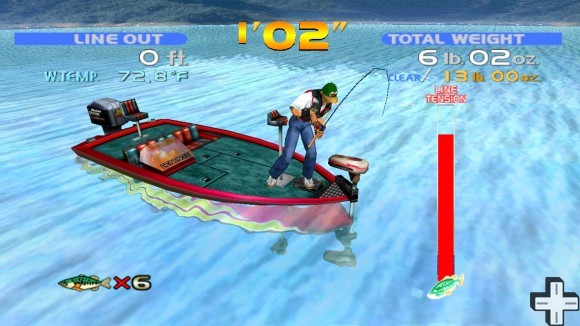
There are three modes of play, Arcade Mode, Nature Mode and Tournament Mode and regardless of what mode you’re playing, the premise across all three is the same – fishing. Across all three of the modes of play the fishing is far more challenging than fishing in Twilight Princess, this is achieved mostly by the line tension. Whilst fishing, if you’re trying to reel in the fish too hard and too quickly the line will snap, thus causing the catch to be lost.
Whilst this may not seem like a big problem, the way that the reeling is achieved in the Xbox Live version of the game can be a bit of a challenge. In the Dreamcast version and the Wii version the reeling is achieved in a very physical way, with the Xbox 360 it’s a case of simply holding one of the shoulder buttons until suddenly the line tension bar on screen is red and – snap, it’s gone.

In the Arcade Mode, the line tension is a big issue and it’s a matter of beating the clock. A selection of lakes, oceans and generally wet areas are made available and after selecting the course, it’s simply a case of aim the rod and cast the line and reel the fish in a quickly as possible. The aim of Arcade Mode is to catch as many fish and as large, a fish as possible in the shortest amount of time.
In Nature Mode, the stress of trying to get big fish quickly has passed and it’s more a case of: “Fishing isn’t about fishing at all, but about telling the tales”. All that needs to be done is basic, gentle fishing in a variety of courses. Finally is Tournament Mode, whereby everyone must do battle and try and hit the goals before moving on to the next level and the harder opponents.
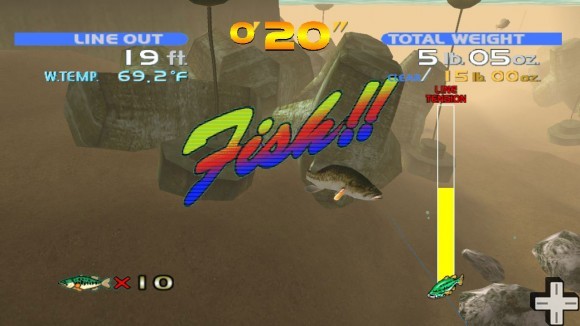
SEGA Bass Fishing is a true blast from the past, with the Dreamcast voiceovers, animation and graphics making a return. Whilst the Xbox 360 is a current generation console and it’s graphical performance has moved on leaps and bounds from the old Dreamcast days, there’s not been a single thing touched in SEGA Bass Fishing. It’s almost like stepping back in time. This isn’t necessarily a good thing as the graphics haven’t aged well and the controls, whilst somewhat intuitive, don’t allow for any flexibility from the player. In many ways it’s almost like a “on-the-rails” shooting game, just with fishing rather than guns.
Yet, the game is aimed at the budget market and it’s downloadable for a good price online. If you’re looking for a bit of gaming nostalgia, SEGA Bass Fishing is worth picking up, simply because of it’s kitsch value.
Cute Things Dying Violently

Everyone loves cute things, it’s just a given. Even those manly men, with hardly any neck or hair, enjoy cute things – they just can’t admit it in public otherwise they can grow necks at amazing rates. Cute things are just a staple of life, from puppies and kittens to lemmings and surprised hamsters. Killing these things to almost all people seems like an impossible feat, which is why Cute Things Dying Violently is a game that’s perfect for everyone.
Killing is fun, we all know it. That’s why generic war games are so popular these days, people like to get big guns and shoot things, in realistic ways such as Battlefield and unrealistic ways such as Doom or Halo. However, in Cute Things Dying Violently, neither of these ways of committing the ultimate act against humanity is utilised. Instead, the gamer gets to control a number of little blue blobs and move them left or right and then throw them in the air.
The reason the concept sounds simple is because it is, and the gameplay has clearly been honed to ensure it’s as easy to pick up as the rationale behind the title. There are a few tutorial levels and some prompts in level to help you get used to the gameplay, but often these are not required due to the intuitive nature of the game. The aim of each level is to get as many “Cute Things” into the lift as possible. This can be achieved by throwing the cute thing into the lift, over, under or around a number of destructive items, such as electric, fire, massive saws, acid and even boss enemies. Fail to miss one of these killing items and your cute thing will be dead and blood will fly across the level.
Before long you become desensitised to all of the blood, which is a good thing as there are bonus levels for completing certain objectives in the game. These bonus levels will vary a lot; however, the most gruesome level has to be the one where the aim of the game is to murder all of the cute little things. To actually kill these little things is very easy and blood flying around everywhere is a remarkable sight.
The levels themselves are well designed and unlike many indie games, they owe nothing to luck. Each level is cleverly designed to ensure that they are not only gradually more challenging, but the completion of each level has a level of satisfaction as your skills are really what completed the game – not just a lucky throw.
Graphically speaking the game is somewhat basic, the designs are basic cartoons and whilst this could shout “indie game”, the aesthetic lends itself well to the murderous style of the game. A little touch up here or there would take the game from basic to well drawn. Whilst the music isn’t something you will hear orchestrated by the London Philharmonic Orchestra, it suits the game and is relaxing and enjoyable.
The developer has even gone as far as allowing users to create their own levels, with a level creating option. This is a lot of fun and is very easy to use, whilst there are no real “tutorials” on how to create a level, the basics are there and it only takes a few minutes to understand how to actually create the most gruesome and impossible levels for your friends to try and complete.
The main problem with Cute Things Dying Violently isn’t that it’s impossible to put down, although this is a problem, it’s that the cute things aren’t cute enough to really care if you’ve killed it or not. Although they chant adorable sentences, such as “I love you very much” you couldn’t really care less if it did, indeed, love you. This could be solved by putting kitten’s faces in the way, or something that’s less alien as the lead character; however, that might push the game from being enjoyable to horrible.
Even so, the game is enjoyable, addictive and needs to be played for a long period before being put down. It’s a great addition to the murderous puzzle games in the world.
Raventhorne

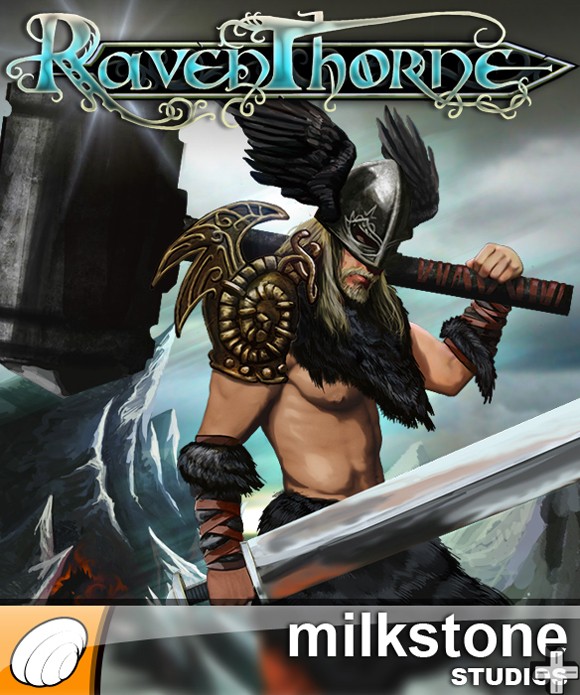
Rather than going for the typical Japanese ninja theme, or “push the boundaries of imagination” and go into a post-apocalyptic future, Raventhorne has pulled heavily from Norse Mythology. Or hero is stranded in the underworld, with no knowledge as to why or how he is there. Within a few seconds, a very basic plot is outlined and it becomes clear that to find out more, the gamer needs to do battle.
To say “do battle” is a bit of an exaggeration with Raventhorne, a better phrase is “button bash”. Whilst the developers claim, at great length in game, there are options to kill the undead, no tactics worked aside from hitting the A button. There’s meant to be two battle options, the regular attack and the slightly stronger attack, then there’s jump and block for other moments in the game. However, the responsiveness of the main character against the enemies is such that any form of tactic considered would be a waste as by the time you’ve tapped a few options, you’ll be on your back.
In addition to this, he has some magical powers that he can summon once his energy gauge hits full. At this point, you can select either a lightening attack, health restore, stamina restore or a temporary power boost. Most of the time, a lightening attack is the only thing worth considering as it helps to destroy the already over strong enemies. There seems to be very little logic in how the enemies are killed, it’s not a case of jumping on it 8 times and then he’ll die, Robotnik style, it’s more random. Sometimes the enemies are easy and other times, they are impossibly hard. Yet, there are no physical differences so it makes going into battle even more challenging. Although, hitting a flying, dead, skeletal bird and seeing blood coming off the creature is somewhat annoying. Not forgetting the levelling up system, although the effects of levelling up are not noticeable at all.
The very basic plot, at no point is explained. The introduction of secondary characters, such as witches and demons who are all trying to point you in different directions – although the only direction you can really go is forward, add nothing but further irritations. The entire purpose of the lead character being in the Underworld and having to battle his way out for “vengeance” is clichéd and trite.
Before long, it’s all over. After only 7 stages and normally three to four “chapters” inside the stages it’s done, finite. There’s literally about 4-5 hours gameplay and that’s with the occasional break to enjoy other more leisurely things, like lunch.
The one thing it really has got going for it though, is it’s looks. Raventhorne is a polished and pretty game, whilst the main character may look like a cross between Wolverine, Thor and the Huntchback of Notre-Dame, the rest of the cast and the environments are beautiful. With depth, detail and a clear concept, the act of looking at Raventhorne is an enjoyable one, it’s just most of the pleasure ends there. The soundtrack is enjoyable as well, it’s got a Lord of the Rings style effect which is trying to enhance the fantasy theme that bit further. It’s a great musical score, although there’s not a lot of variety, it’s the same basic background songs in a cycle.
Raventhorne is the first in the Indie Uprising of Summer this year and unfortunately it’s set the bar pretty low. With generic gameplay, poor player responsiveness, a tired plot, it won’t take long until Raventhorne is left behind. Even the most stunning visuals and great soundtrack can carry a game so far although at 230 Microsoft Points, it’s not an expensive purchase and is definitely worth a play on a wet day.
Pixel Blocked!

There are literally hundreds of thousands of games in the world now and it’s getting progressively harder to make yourself stand out in the crowd. Unless you’re an established franchise, indie titles are getting a rougher time than ever before. Of course, the access to systems to develop on is better than it has ever been, with Xbox Live Arcade, Android and iOS systems now being open to one-man bands, but with this same blessing comes a curse – the plague of being drowned by a million other games.
So to find a game that’s actually worth playing in the hundreds of Tetris and space invaders clones and the latest killing Zombies title is a rare treat and to be developed by a one-man band is an achievement and this is something that Daniel Truong over at Damni Games has managed to accomplish.
At first glance, Pixel Blocked! screams lawsuit. There are a lot of sprites and artwork that are clearly a homage to other established games, such as stars from Mario, hearts from Zelda and many other types of sprite from various 2D games over the years. However, the more the title is played, the more it becomes clear that these aren’t just straight rips from legacy games.
After the first shock of such familiar, yet different, sprites, too actually start the game is very easy. With just a few taps of the button, you are quickly flicking shapes in circles and firing blocks into predetermined places. Yes, Pixel Blocked! has a very simple gameplay premise – fill in the gaps. It sounds easy at first and throughout the 180 levels, it gets gradually more complicated with the shapes that need completing containing blocks already, some that are magnetic, some toxic and some that just crumble after one touch. In case you make a mistake, there are up to three chances per level to destroy any block that already existed, or shot in the wrong place.
For the uncompetitive, this would be the end of Pixel Blocked! and for those who aren’t, it’s a real shame as Pixel Blocked! comes with a three star rating system. For each level there are a number of prerequisites that need to be completed in order to get a star rating. Easily the most challenging prerequisite that needs to be completed is the Time, which at times seems impossibly fast and will have you throwing the controller to the other side of the sofa and then grabbing it again to try to complete the level.
The game in itself is very clean cut, with basic recurring music and a very bright and colourful interface. It’s simple and enjoyable to navigate through and at no point can the player get lost in a sea of menus, sub menus and even more stats and the like. The only downfall would be the lack of Achievements available whilst playing the game – after all, everyone likes bragging rights.
The game itself looks and feels like it’s the sort of game you’d find on the iPhone or Android, but wish it wasn’t as with some games, you just need a controller.
Ultimately, Pixel Blocked! is a must have for any gamer who likes puzzle games, if it was touched up a little bit and given a lovely, expensive budget it would be easy to consider it the Chime for Xbox Live.
Dungeons & Dragons Daggerdale

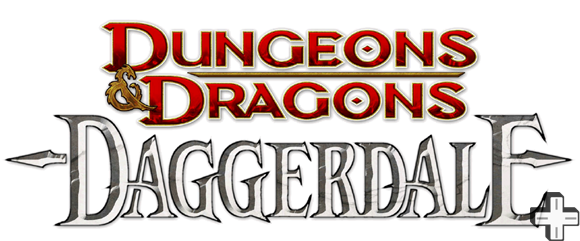
Dungeons & Dragons Daggerdale can be played in single player mode, or as part of a co-operative team. The single player is essentially the same as the co-operative mode; however, the title is far more bland and disengaging when playing on your own. Set in a world of lifeless, unmoving NPCs your character has to battle its way through the worlds meeting several little “hubs” along the way that help the story move along a little.
The usual characters are available to choose from, Elf Rogue, Human Warrior, Dwarf Cleric and a Mage. There is a selection of abilities depending on the character chosen, and then it’s your choice as to where to assign the points to make some abilities a little better. Once the characters have been chosen and their optional capabilities leveled up, it’s time to set off and battle your way through the overworld in order to restore order.
Unfortunately, it is at this point when the game is let down by its prohibitively dull interface. With an incredibly fixed storyline, with no room for movement or character development, this hack and slash game is further sullied by the poor graphics and textures. Whilst this is a downloadable game, it’s still over a gig and the textures are dull and bland. Now, this is a game set underground, so there’s an expectation for the game to be dark, dank and grimy; however, Dungeons & Dragons Daggerdale is just dull. It’s a fine line between something that’s dank and something that is dull and unfortunately Daggerdale has moved to the wrong side of the line.
In addition to this, the actual gameplay is limited by the linear storymode. Jumping from one, unmoving, lifeless NPC to another getting the bare minimum information whilst you travel through the various caverns killing the same enemies multiple times over, it’s enjoyable for a short period of time but becomes tedious pretty quickly.
Where this game really comes into its own is in the co-operative modes, be that online or with other players in the same room. When co-oping with other players, this hack and slash title becomes far more interesting, whereas playing on your own it’s a dull game, playing with others it becomes competitive and the graphics and poor gameplay is left to the side.
At no point can one describe this as a “great game” but with the multiplayer elements it moves from a poor game, to something that’s enjoyable. Whilst Daggerdale could easily be bettered by going back into the “oven” for a few more months, it’s passable with the co-op mode.
Dungeons & Dragons Daggerdale is essentially a poor game. Limited graphics, poor textures, and a painfully linear storymode it’s true saving grace is the multiplayer mode where human nature comes in and makes the game enjoyable.


